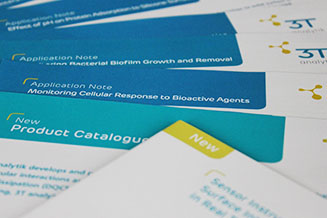As the QCM-D applications grow everyday, the technology brings users new experience and insights to their experiments. A crucial part of applying QCM-D is the interpretation of signals. It's important to understand the correlation between frequency/damping and the interaction on the sensor surface. We present here some examples to help you learn the technology background in various applications.

3T analytik GmbH & Co. KG · take-off GewerbePark 4 · D-78579 Neuhausen ob Eck






